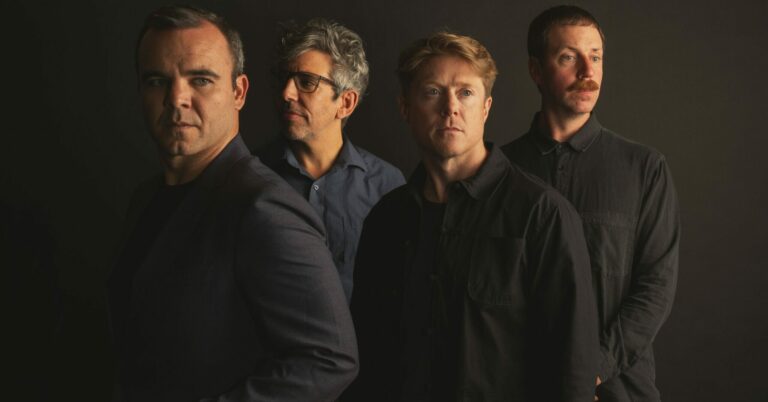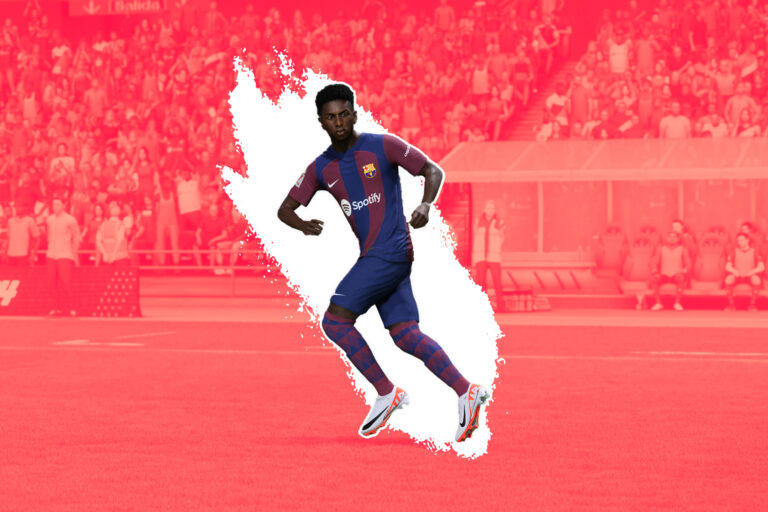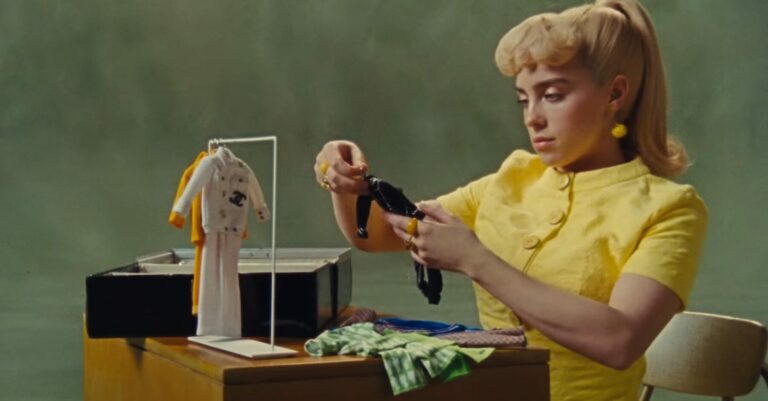The right back position can make a huge difference in a counter-attacking side that relies on crossing and speed, while mantaining their defensive duties. In this guide, we’ll be looking ath the best wonderkids on EA Sports FC 24 in the RB and RWB positions.
Alejandro Balde Martínez (Overall 81 – Potential 89)
Spanish-born left-back and right-back, Balde, also known under his full name as Alejandro Balde Martínez has made quite the impact for the Barcelona senior team when he joined them in 2021 from the Barcelona B side. He has currently scored 1 goal in 51 appearances and has made 7 appearances for the Spanish national side. In 2023, Balde signed a new contract with Barcelona which will see him at the club until 2028.
In terms of FIFA, or now known EA Sports FC 24, Balde does possess a great attribute line starting with a powerful overall of 81, making him a solid starter for the Barça side. However, it’s his potential that makes him a must-signing in the game as he has a potential overall of 89 — making him world class. At only 19, Balde has a market value of 53 million euros but can be bought out with a release clause for 119.3 million euros.
Arnau Martínez (Overall 80 – Potential 86)
Arnau Martínez has emerged as a bright right-back for Girona FC in La Liga. Standing at 181cm (5’11”) and right-footed, the 20-year-old defender boasts an overall rating 80 with a superb potential of 86. His in-game profile reflects high attacking and medium defensive work rates, equipped with a 3-star weak foot and 2-star skill moves.
Martínez’s key attributes include 79 pace, 72 passing, 76 dribbling, 76 defending, and 70 physicality, making him a well-rounded defender in the game suitable for a growing team that is looking for a long-term solution.
Malo Gusto (Overall 76 – Potential 85)
The French right-back Malo Gusto has made a significant impact on the football world since he was born on May 19, 2003. He stands at 1.77 meters (5 feet 10 inches) and is primarily known for his speed and agility on the flanks. His career began at the prominent French league club Olympique Lyonnais, where he displayed a consistent display of skill and tactical awareness.
Malo Gusto’s stats in EA Sports FC 24 reflect his dynamic playing style. His top attributes include Pace (88), Crossing (85), Stamina (84), Dribbling (82), and Defensive Awareness (81), showcasing his ability to contribute effectively in both defensive duties and attacking runs. However, his areas for improvement are evident in his lower-rated attributes: Finishing (65), Heading Accuracy (64), Free Kick Accuracy (62), Volleys (61), and Penalties (60). With a potential rating of 88 in the game, Gusto is a promising talent for any team but could be a potential player for Europa League hopefules or those looking to push higher in the Premier League. He fits best in formations that require full-backs to actively participate in both defense and attack, such as a 4-3-3 or a 3-5-2, where his speed and crossing abilities can be maximized.
Trai Hume (Overall 70 – Potential 80)
The Northern Ireland-born Trai Hume is a versatile defender best known for his right-back ability. Born on September 2, 2002, Hume has a height of 1.83 meters (6 feet), making him a formidable presence in defensive positions. He began his career at Linfield FC, a top-tier club in the NIFL Premiership, before making a move to Sunderland in England. His time at Linfield was marked by impressive performances, showcasing his defensive prowess and ability to adapt to various roles across the back line. At Sunderland, he has continued to develop, demonstrating his potential as a promising young defender. Recent articles about Hume emphasized his tenacity and tactical intelligence during challenging matches, demonstrating his ability to read the game and make crucial decisions.
Trai Hume’s abilities are well-represented throug his overall in the game. His top attributes are Defensive Awareness (75), Standing Tackle (74), Strength (73), Stamina (72), and Pace (71), which underline his solid defensive capabilities and physicality. However, his game still has room for improvement, particularly in his lower-rated attributes: Finishing (58), Free Kick Accuracy (57), Curve (56), Long Shots (55), and Penalties (54). Hume has a potential rating of 82 in the game, suggesting that he has a lot of room for growth and could become a key player in a team’s defense. He is best suited for teams that employ a more traditional defensive setup, such as a 4-4-2 or a 5-3-2 formation, where his defensive skills and physical presence can be optimally utilized.
Rico Lewis (Overall 74 – Potential 87)
Rico Lewis, the English lad, has been rising in prominence as a versatile defender, particularly excelling in the right-back position. Born on November 21, 2004, Lewis stands at a height of 1.75 meters (5 feet 9 inches), bringing agility and a strong presence on the field. He began his journey in football with Manchester City’s youth academy, one of the most renowned academies in England. His progression through the ranks at City has been impressive, leading to appearances with the senior team. Lewis is known for his technical skill, pace, and tactical intelligence, making him a valuable asset in both defensive and offensive situations.
Luckily for us, Rico Lewis’s has some great technical abilites on the game as well as in real life. Some of his strongest skills include Pace (82), Crossing (80), Stamina (79), Dribbling (78), and Defensive Awareness (77), reflecting his proficiency in both attacking and defensive roles. However, he has areas that need improvement, as indicated by his lower-rated attributes: Heading Accuracy (66), Finishing (65), Free Kick Accuracy (63), Penalties (62), and Strength (60). With a potential rating of 86 in the game, he fits best in teams that utilize attacking full-backs, making formations like 4-3-3 or 4-2-3-1 ideal for him, where his ability to join the attack and create width is highly valuable.
Archie Gray (Overall 67 – Potential 85)
A rising star in football, Archie James Francis Gray is currently playing for Leeds United. His rapid progression led to a unique arrangement allowing him to train with the first team while still attending St John Fisher Catholic High School in Harrogate after joining Leeds United’s academy at the under-9 level. Marcelo Bielsa managed this club at the time, and this opportunity arose. Gray’s potential was evident when, at just 15 years old, he was named on the bench for a Premier League game against Arsenal in December 2021, nearly setting a record for Leeds United’s youngest player. He officially debuted for Leeds’ first team in August 2023 during the 2023–24 EFL Championship season against Cardiff City. Internationally, Gray has represented England at various youth levels, including under-15, under-16, under-17, under-19, and under-20, and was part of the England squad for the 2023 UEFA European Under-17 Championship.
Gray’s stats in EA Sports FC 24 reflect his potential and playing style. With a rating of 66 and a potential of 85, Gray shows promise for significant growth in the game. Short passing (72), dribbling (69+1), ball control (72+1), acceleration (72+1), and agility (72) are among his top attributes, while finishing (59), volleys (55), FK accuracy (55), shot power (62), and long shots (60) are lesser. Having a right-footed play style and a high work rate, Gray has a lean body type, and a value in the game of €2.1M, with a wage of €2K. As a dynamic midfielder with strong passing and dribbling skills, Gray fits well in teams that require quick, agile midfielders to create plays and transition quickly between defense and attack.












